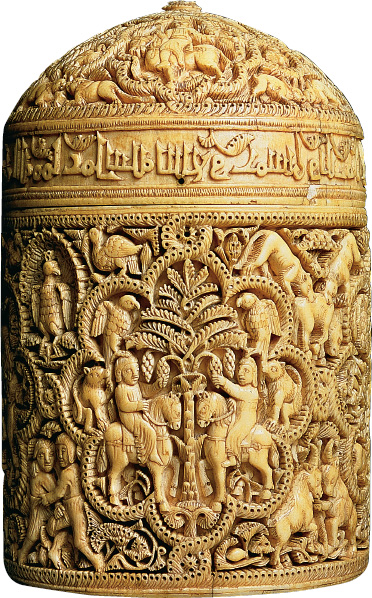Cross-Cultural Influences in Science and Medicine

Despite growing suspicions on both sides, the Islamic world profoundly shaped Christian European culture in Spain and elsewhere. Toledo, for example, became an important center of learning through which Arab intellectual achievements entered and influenced western Europe. Arabic knowledge of science and mathematics, derived from the Chinese, Greeks, and Hindus, was highly sophisticated. The Muslim mathematician al-Khwarizmi (al-KHWAHR-uhz-mee) (d. 830) wrote the important treatise Algebra, the first work in which the word algebra is used mathematically. Al-Khwarizmi adopted the Hindu system of numbers (1, 2, 3, 4), used it in his Algebra, and applied mathematics to problems of physics and astronomy. (Since our system of numbers is actually Hindu in origin, the term Arabic numerals, coined about 1847, is a misnomer.) Scholars in Baghdad translated Euclid’s Elements, the basic text for plane and solid geometry (see “Science” in Chapter 4). Muslims also instructed Westerners in the use of the zero, which permitted the execution of complicated problems of multiplication and long division.
Middle Eastern Arabs translated and codified the scientific and philosophical learning of Greek and Persian antiquity. In the ninth and tenth centuries that knowledge was brought to Spain, where between 1150 and 1250 it was translated into Latin. Europeans’ knowledge of Aristotle (see “The Flowering of Philosophy” in Chapter 3) changed the entire direction of European philosophy and theology.
Muslim medical knowledge far surpassed that of the West. By the ninth century Arab physicians had translated most of the treatises of the ancient Greek physician Hippocrates and produced a number of important works of their own. Arabic science reached its peak in the physician, philologist, philosopher, poet, and scientist ibn-Sina of Bukhara (980–1037), known in the West as Avicenna (ah-vuh-SEH-nuh). His Canon of Medicine codified all Greco-Arabic medical thought, described the contagious nature of tuberculosis and the spreading of diseases, and listed 760 pharmaceutical drugs.
Unfortunately, many of these treatises came to the West as translations from Greek to Arabic and then to Latin and inevitably lost a great deal in translation. Nevertheless, in the ninth and tenth centuries Arabic knowledge and experience in anatomy and pharmaceutical prescriptions much enriched Western knowledge.